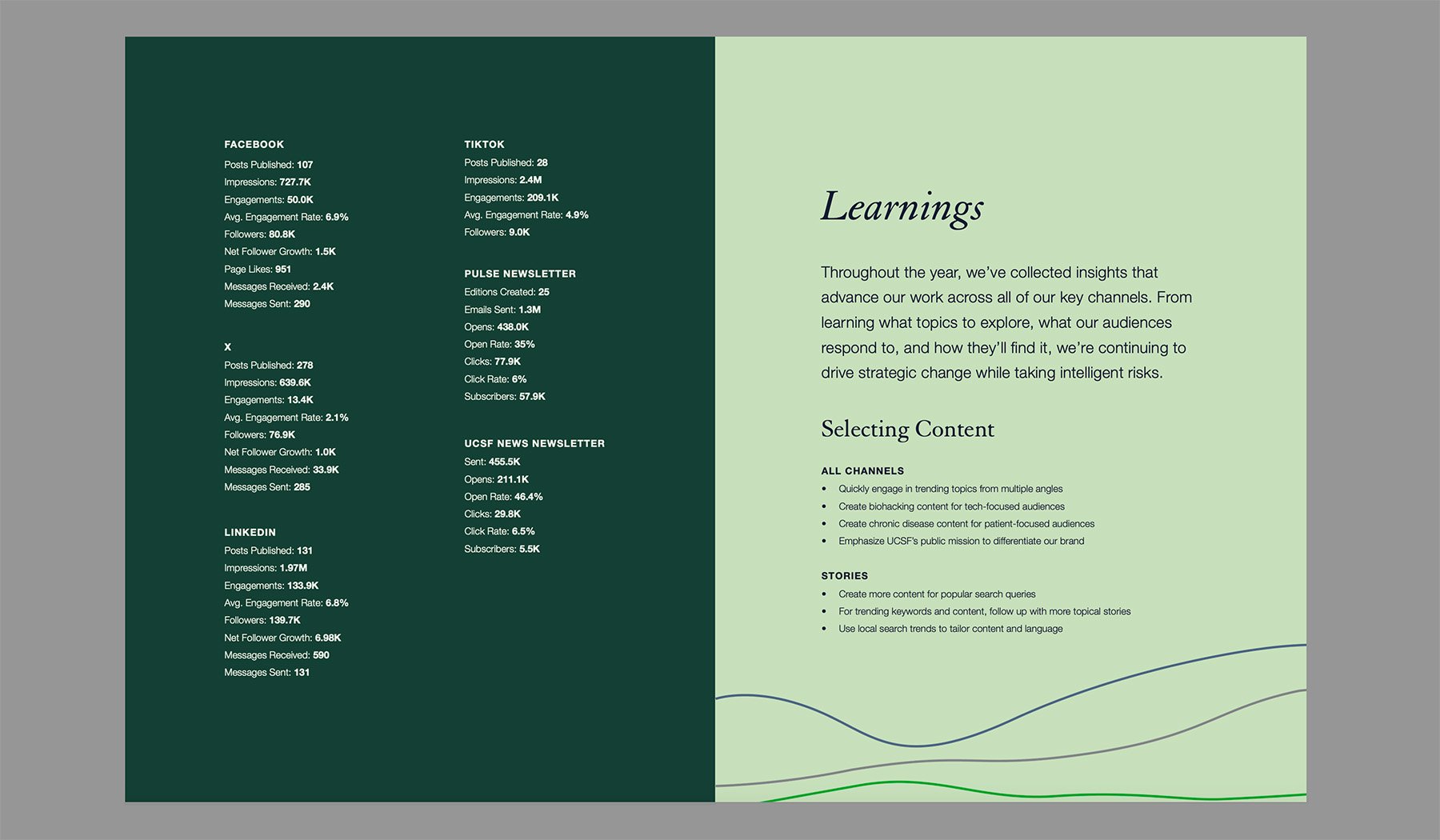The problem
UCSF’s Office of Communications has a wide variety of content, distribution channels, and audiences. It’s difficult to understand our impact and adjust our strategies.
The solution
Create a monthly and annual report that grants us valuable context and analysis, allowing us to objectively evaluate what we’re doing and shift tactics as necessary.
The process
Starting a monthly dashboard (or curating an annual report) isn’t easy. That said, there was clearly a gap that needed to be addressed. Here’s how I did it.
Step One: Presentation to Leadership
Articulate both the problem and the promise of creating a monthly and annual department-wide report.
Step Two: Stakeholder Interviews
Interview members of the leadership team to understand how they define success and what they need to know.
Step Three: Define Available Data & KPIs
Help specify available data sets and KPIs that we can use to quantify our success and gain effective insights.
Step Four: Platform and Budget Analysis
Explore best-in-class platforms and conduct cost-analysis against desired features and technical constraints.
Step Five: Content Strategy
Structure the desired KPIs and data sets within a logical framework that helps clarify communications goals.
Step Six: Prototype Creation
Design a working prototype in our platform of choice to troubleshoot technical issues while verifying included data.
Step Seven: Stakeholder Approvals
Meet with key stakeholders to determine if we’re examining the right information.
Step Eight: Iterate and Adjust
Based on stakeholder feedback, finalize the report while defining an ongoing workflow for monthly curation.
Step Nine: Assemble the Team
On a monthly basis, work with individual subject matter experts to create context and learnings that clarify what we’re seeing.
Step Ten: Hold Monthly Meetings
Arrange office-wide report-outs that will inspire conversation, reflection, and adjustment.
Step Eleven: Curate an Annual Report
Using the monthly reports as a guide, curate an annual report with relevant subject matter experts.
Step Twelve: Design and Finalize Report
Create a polished report that effectively communicates our top learnings, discoveries, and impact.
The results
These reports have provided vital data that continue to spur substantive change and higher ROI.
Ongoing Strategic Discussion
Both in smaller meetings and in monthly report-outs, team members engage in open and strategic discussion.
Quantifiable and Measurable Success
Rather than speculating if we are doing “well” or “not well”, we know exactly what’s happening and why.
Shifting Approaches to Common Problems
Routine analysis has allowed us to spot problems before they become major issues, ultimately shifting our approach.
Improved Morale and Teamwork
Team-wide reflection has allowed us to celebrate our wins across siloes, showing how we all contribute to success.





